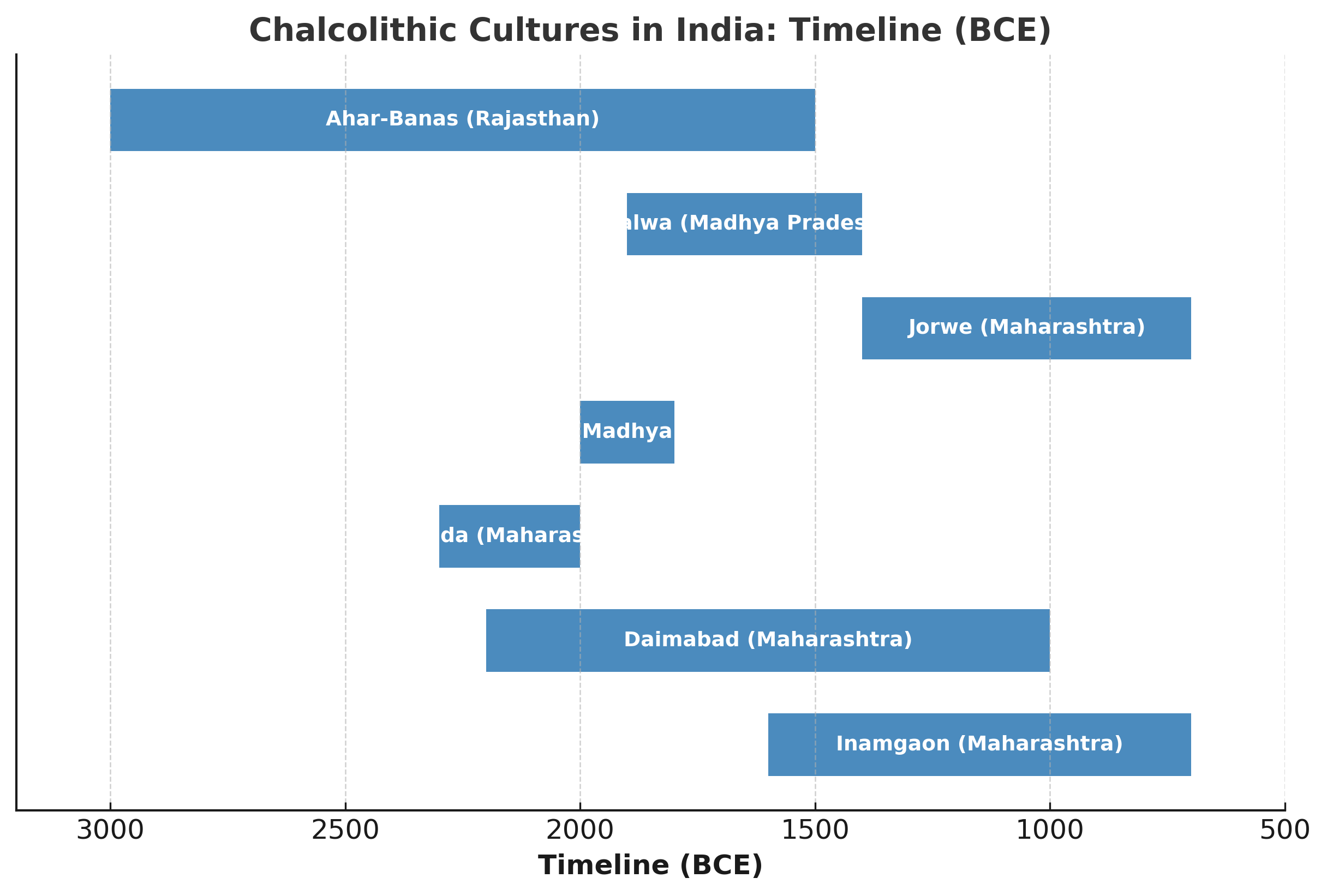Ancient History Playlist
11 chapters • 0 completed
Stone age
5 topics
Chalcolithic age(Copper Age)
2 topics
Indus Valley Civilization
5 topics
Vedic age
15 topics
The Mahajanapadas
8 topics
Buddhism and Jainism
16 topics
Mauryan Empire
11 topics
Post-Mauryan Period
14 topics
Gupta Period
16 topics
Post-Gupta Period
16 topics
Sangam Age
7 topics
Chapter 2: Chalcolithic age(Copper Age)
Chapter TestChalcolithic Age (Copper Age)
The Chalcolithic Age, also called the Copper Age, was the transitional phase between the Neolithic and Bronze Age. It is marked by the first use of copper along with stone tools, growth of agriculture, pottery, and village settlements.
The Chalcolithic Age, also called the Copper Age, was the transitional phase between the Neolithic and Bronze Age. It is marked by the first use of copper along with stone tools, growth of agriculture, pottery, and village settlements.
Characteristic Features of Chalcolithic Age
| Aspect | Details |
|---|---|
| Tools | Copper and stone tools used together |
| Agriculture | Wheat, barley, rice, pulses, millets |
| Pottery | Painted pottery, Black-on-Red ware |
| Settlements | Mud-brick houses, fortified villages |
| Burials | Grave goods showing belief in afterlife |
| Economy | Agriculture, animal domestication, cotton weaving |
Fun Facts
Daimabad hoard: copper objects including a chariot, animals, and figurines.
Chalcolithic villages had storage granaries for surplus grain.
Regional cultures developed distinct pottery designs.
Mains Key Points
Prelims Strategy Tips
Chalcolithic Cultures in India
The Chalcolithic Age in India (3000–1000 BCE) saw the emergence of several regional cultures. These cultures were marked by the use of copper along with stone tools, agriculture, painted pottery, and permanent settlements.
The Chalcolithic Age in India (3000–1000 BCE) saw the emergence of several regional cultures. These cultures were marked by the use of copper along with stone tools, agriculture, painted pottery, and permanent settlements.

Chalcolithic Cultures in India
| Culture | Region | Timeline | Pottery | Economy | Distinctive Features |
|---|---|---|---|---|---|
| Ahar-Banas | Rajasthan (Ahar, Gilund, Banas valley) | 3000–1500 BCE | Black-and-Red ware with white designs | Agriculture (wheat, barley, rice), domestication | Stone structures, copper smelting evidence |
| Malwa | Madhya Pradesh, Maharashtra | 1900–1400 BCE | Black painted designs on orange/red pottery | Agriculture, fortified settlements | Large houses, wheel-made pottery |
| Jorwe | Maharashtra (Jorwe, Daimabad, Inamgaon) | 1400–700 BCE | Red ware with black geometric patterns | Millets, pulses, granaries | Social hierarchy, rituals |
| Kayatha | Madhya Pradesh (near Ujjain) | 2000–1800 BCE | Red-slipped ware with decorations | Early copper use, agriculture | Transitional traits (Neolithic + Chalcolithic) |
| Savalda | Maharashtra | 2300–2000 BCE | Coarse handmade pottery | Agriculture, domestication | Rectangular houses |
| Daimabad | Maharashtra | 2200–1000 BCE | Associated with Jorwe pottery | Agriculture, copper use | Copper hoard (chariot, animals) |
| Inamgaon | Maharashtra | 1600–700 BCE | Jorwe pottery | Agriculture, storage | Planned settlements, burials |
Chapter Complete!
Ready to move to the next chapter?
